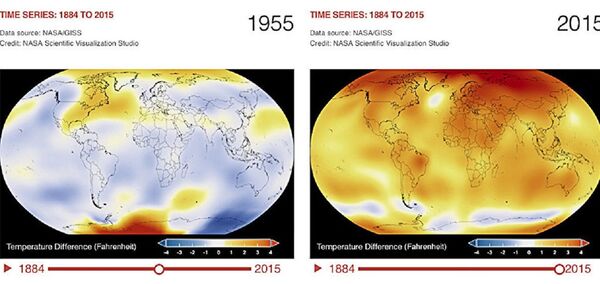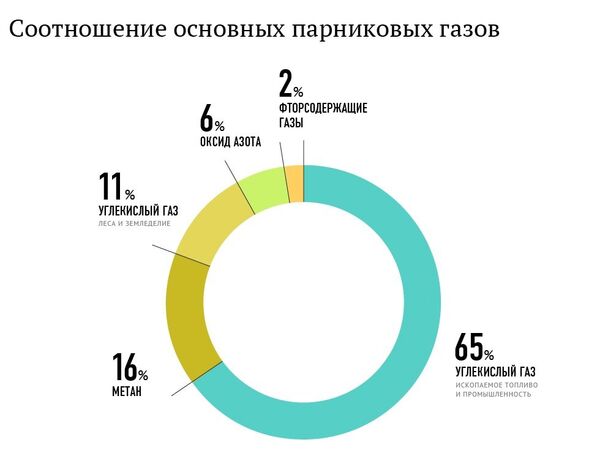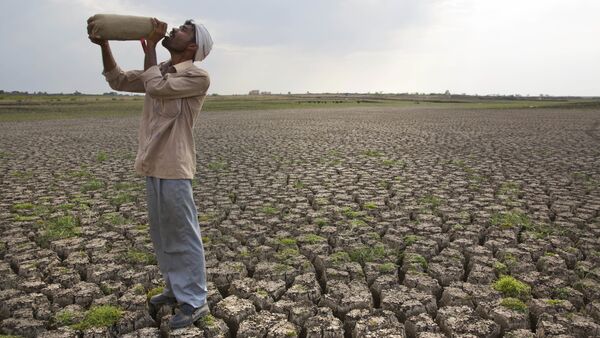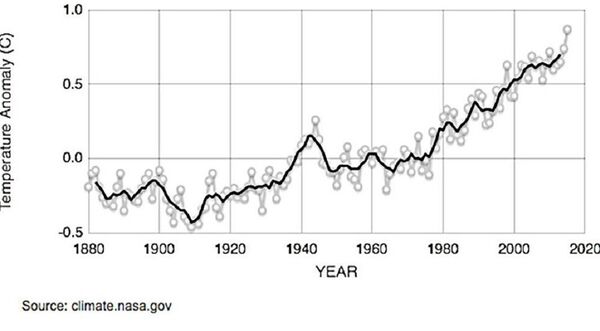A record year
The impact of 2016 began on January 30 when in the Russian capital, Moscow, broke temperature records for held since 1989 when temperatures hit + 2.6 ° C (36.68° F).
Each subsequent month broke the previous months’ records with July being the warmest in the history of meteorological observations.
Such changing climatic phenomenon was seen not just in Moscow but throughout the world.
In the fall of 2016, the trend continued as temperatures were abnormally warm around the globe. September 2016 was the hottest month in Europe since 1910.

The continent of Africa fell a little short of breaking its previous record, with September 2016 being a little cooler than it was in 2015 when the temperature broke records held since 1910.
At the North Pole in the end of December temperatures hovered around zero degrees, about 20 degrees above the norm.
The growth of ice cover which normally continuously increases in autumn, suddenly slowed from October to November for the first time in 40 years of satellite observations.
In November, the ice at the North Pole covered 9.08 million square kilometers — 800 thousand square kilometers less than the previous low in 2006.
Greenhouse effect warms the planet
In 2015, the global concentration of carbon dioxide in the atmosphere exceeded 400 parts per million (scientists call it ppm — parts per million) for the first time ever.
The 400 ppm is psychologically an important mark because according to scientists a “safe” concentration of CO2 is considered to be 350 ppm. Many experts believe that exceeding this value causes climatic disasters.
While CO2 is the most known greenhouse gas methane (CH4), nitrous oxide (N2O), fluorine-containing gases and water vapor also are greenhouse gases. Together they create a transparent blanket that wraps the Earth and prevents solar heat from dissipating into space.

The main source of carbon dioxide gas is fossil fuels. The combustion of coal, oil, and gas releases huge amounts of CO2 into the atmosphere.The more greenhouse gases there are in the atmosphere, the more the plant heats up. If the temperature changes just 1-2 degrees the consequences could be disastrous. Some catastrophic changes may include warmer water in the oceans which melt glaciers and as a result, increased sea levels would cause flooding for coastal and low-lying areas.
Desert and arid regions will become even less uninhabitable. However, other regions will also suffer and according to some estimates, if temperatures rise at the same rate as now, by 2050 the Earth will lose some 15% to 37% of its animal and plant species.
Dangerous limits
Global rising temperatures have occurred for more than half a century. In 2016, temperatures exceeded 1.5 ° C (34.7° F) above the pre-industrial era.
In the Paris Agreement, signed by representatives from nearly a hundred countries global average temperatures were agreed to be kept “well below” 2 ° C (35.6 ° F) and limited to rising 1.5 ° C (34.7° F).
However, the document does not stipulate what sanctions await those who do not abide by the agreements.
Nevertheless, even if all the countries which signed the Paris Agreement dramatically reduce emissions, the planet will not immediately cool down. According to the scientists temperatures in the 21st century will continue to grow regardless.
However, the world is pushing for the “global peaking of greenhouse gas emissions as soon as possible.” The agreement has been described as an incentive for and the driver of fossil fuel divestment.
According to some reports, the Paris deal is the world's first comprehensive climate agreement.



